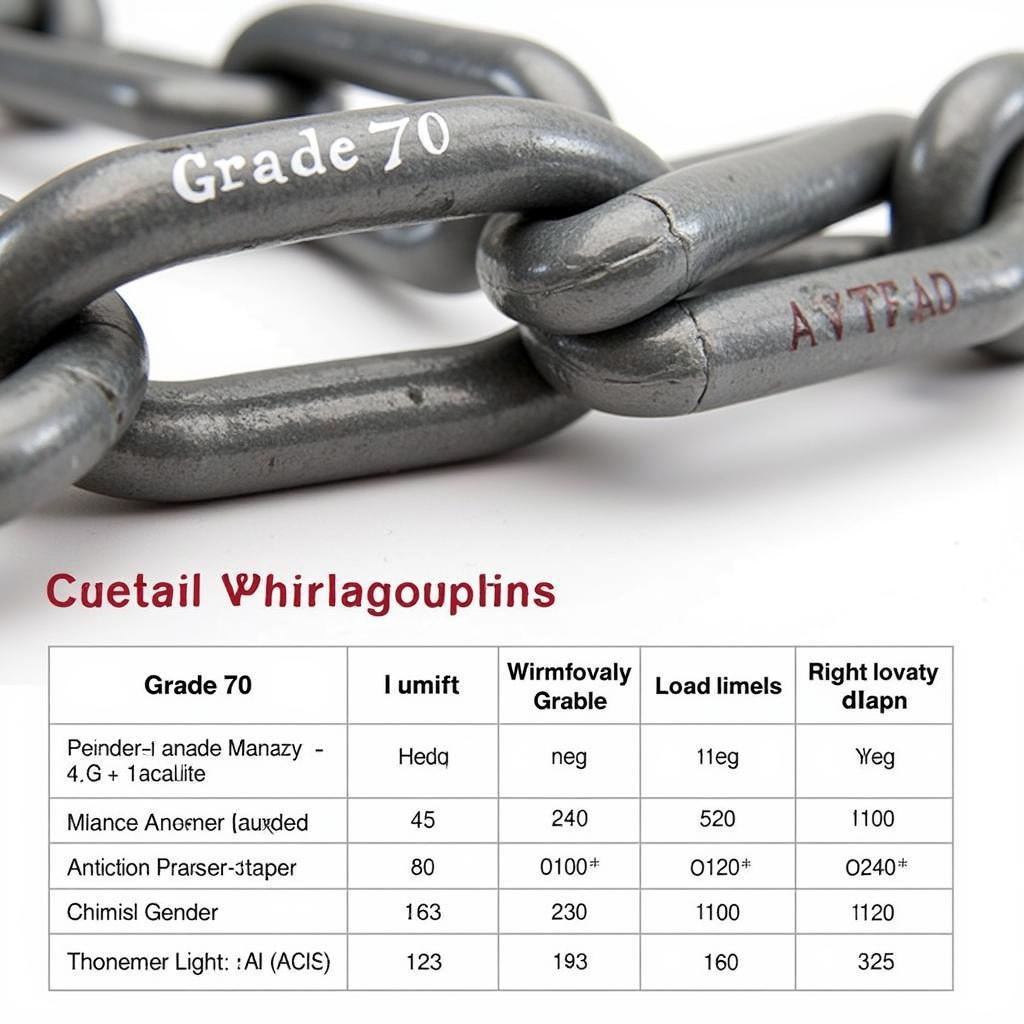When your vehicle is stuck, a hook and chain can be a lifesaver. Knowing how to properly use a “Fix My Car Hook And Chain” setup is crucial, not just for getting yourself unstuck but also for preventing damage to your vehicle and ensuring everyone’s safety. This guide covers everything from choosing the right equipment to executing the recovery safely and effectively.
Understanding Your Hook and Chain Needs
Before you even think about yanking your car out of a ditch, you need the right gear. Choosing the wrong hook and chain can lead to disaster, causing more damage than the initial problem.
Choosing the Right Hook
Not all hooks are created equal. Clevis hooks, grab hooks, and tow hooks each have their strengths and weaknesses. The right choice depends on your specific situation and the recovery points on your vehicle. Tow hooks are generally preferred as they are designed specifically for vehicle recovery and offer a secure attachment point. Never attach a hook to a suspension component or anything not designed for towing.
Selecting the Right Chain
Chain strength is crucial. Using a chain that’s too weak can snap under pressure, potentially causing injury or further damage. Look for chains specifically rated for towing and ensure they have a working load limit exceeding your vehicle’s weight. Grade 70 transport chain is commonly recommended for vehicle recovery.
 Grade 70 Transport Chain for Safe Vehicle Recovery
Grade 70 Transport Chain for Safe Vehicle Recovery
Safe and Effective Recovery Techniques
Now that you have the right equipment, it’s time to learn how to use it properly. A poorly executed recovery can be just as damaging as using the wrong tools.
Attaching the Hook and Chain Securely
Attaching the hook and chain correctly is paramount. Ensure the hook is securely fastened to a designated recovery point on your vehicle. Double-check the connection to ensure it won’t come loose during the recovery process. Use a chain binder or other appropriate device to tighten the chain, eliminating slack.
Pulling with Control and Precision
A slow, steady pull is key. Avoid sudden jerks or aggressive acceleration, which can damage your vehicle or the recovery vehicle. Communicate clearly with the person operating the recovery vehicle. If you feel excessive resistance, stop immediately and reassess the situation.
Maintaining Your Hook and Chain
Just like any other tool, your hook and chain require maintenance. Regularly inspect them for wear and tear. Replace any damaged components immediately. Keep the chain clean and lubricated to prevent rust and ensure smooth operation.
“Regular inspection of your recovery gear is crucial,” says John Davis, a certified automotive technician with over 20 years of experience. “A small crack or kink in a chain can dramatically reduce its strength, turning a simple recovery into a dangerous situation.”
Fix My Car Hook and Chain: Common Mistakes to Avoid
Avoid these common pitfalls when using a “fix my car hook and chain”:
- Using the wrong equipment: Ensure your hook and chain are rated for the weight of your vehicle.
- Improper attachment: Always attach the hook to a designated recovery point.
- Jerky pulling: A slow, controlled pull is safer and more effective.
- Neglecting maintenance: Regularly inspect and maintain your recovery equipment.
“Remember,” advises Maria Sanchez, a lead instructor at a prominent off-road driving school, “safety is paramount. If you’re unsure about any aspect of the recovery process, it’s always best to call a professional.”
Conclusion
Using a “fix my car hook and chain” effectively requires the right equipment and proper technique. Following the guidelines in this article will help ensure a safe and successful recovery. Remember to prioritize safety and don’t hesitate to contact a professional if needed. Feel free to reach out to us at AutoTipPro for further assistance at +1 (641) 206-8880. Our office is located at 500 N St Mary’s St, San Antonio, TX 78205, United States.
FAQ
-
What type of chain should I use for vehicle recovery? Grade 70 transport chain is typically recommended.
-
Where should I attach the recovery hook? Always attach the hook to a designated recovery point on your vehicle’s frame.
-
How should I pull a stuck vehicle? Use a slow, steady pull, avoiding sudden jerks.
-
How do I maintain my hook and chain? Regularly inspect for damage and lubricate the chain.
-
What should I do if I’m unsure about the recovery process? Call a professional towing service.
-
Can I use any type of hook for vehicle recovery? No, use a hook specifically designed for towing, like a clevis, grab, or preferably a tow hook.
-
What’s the most important thing to remember during vehicle recovery? Safety is always the top priority.





Leave a Reply